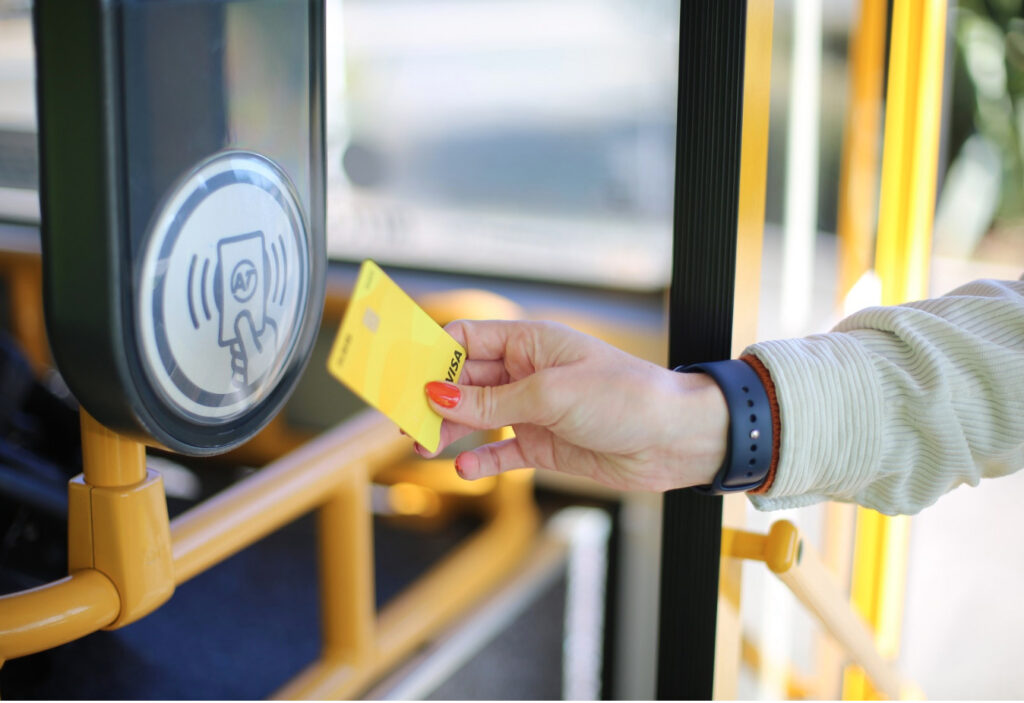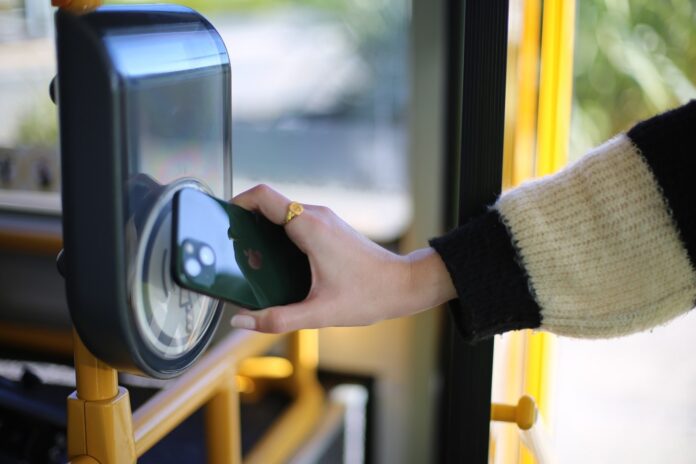Auckland Transport (AT) is set to introduce contactless payment options across the city’s buses, trains and ferries within the next 12 months.
Council says the move will enable customers to tag on and off with contactless payments (debit/credit cards, Apple Pay and Google Pay) alongside the current AT HOP card.
The changes will apply to full fare paying adults. Those wanting to access concession discounts such as Tertiary and SuperGold will still need to use their HOP card as normal.
“You won’t need to stress about buying a HOP card, topping it up, or forgetting it. You can just tag on with what you already have in your pocket like in London, New York or Sydney,” said AT Chief Executive, Dean Kimpton.
“It’s going to make paying for public transport as easy and simple as paying for a coffee, as it should be.”
Mr Kimpton predicts the improvements will lift public transport passenger numbers by between two million and three million trips per year.

“This change is going to make public transport more appealing for more people including tourists, visitors, casual users, and first-time users,” he said.
“I see these improvements which will come in next year, helping to push us past 100 million public transport trips per year in 2024 and that is huge.
“The more people catching public transport, the less emissions, the less traffic, and the easier and safer it is for us to move around our city.”
AT’s Group Manager Digital and Technology Delivery, Chris Creighton says COVID-19 has accelerated the preference for contactless payments.
“Since 2018 there has been a 62 per cent increase in contactless payments. It’s the quickest, easiest way to buy something and it makes perfect sense for public transport.”
Mr Creighton says that there is still a lot of work to do to get the system ready for its launch next year.
“Though the payments will be easy for customers, upgrading our backend system to allow for these payments requires a huge amount of work behind the scenes.
“We have been keeping a close eye on other cities who have already introduced this technology to great success such as London, Sydney and others.”
Council estimates the improvements will cost approximately $23 million.



